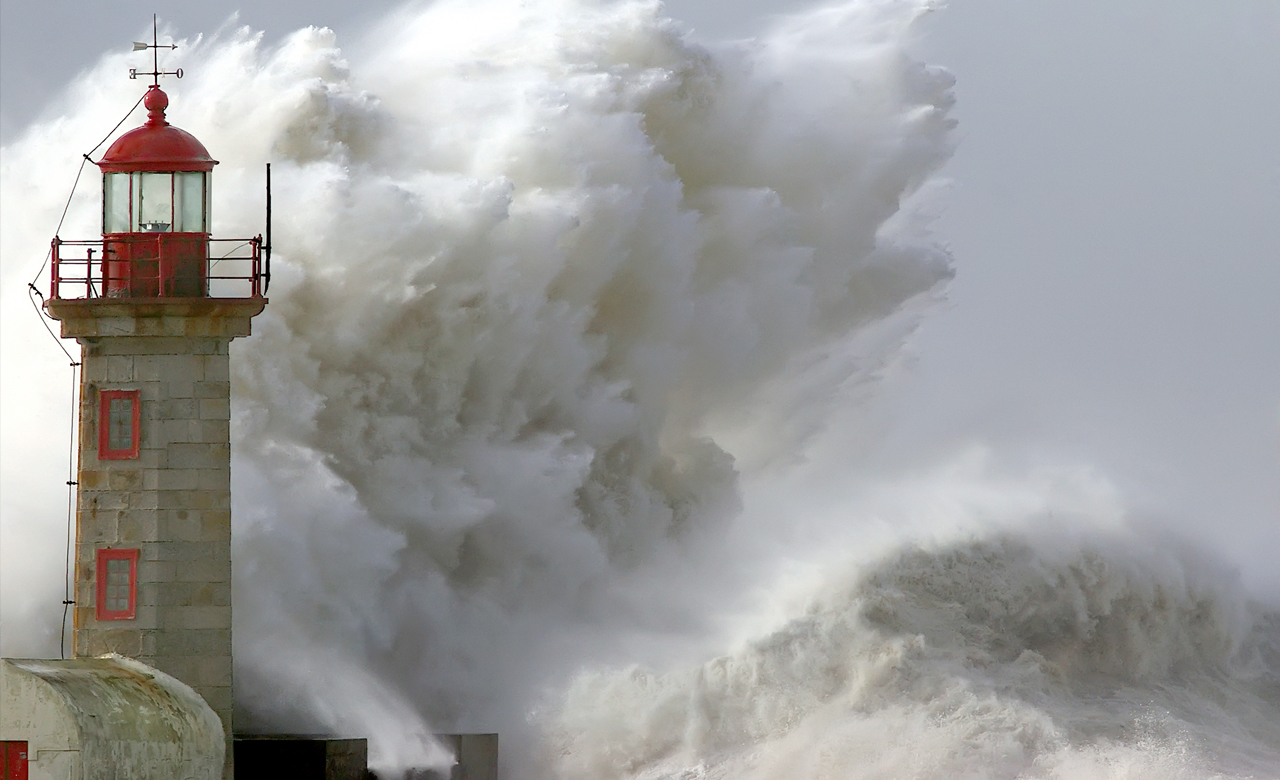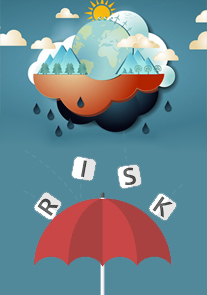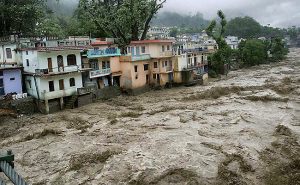
Climate change and the insurance industry hold a very unique and peculiar relationship with each other. While insurance industry is focused on understanding and managing risks, climate change is an exacerbating risk. With a rise in extreme rainfall events, temperature and sea level, natural catastrophes like floods, tropical cyclones, and wildfires are leading to damaging events globally and expected to create severe insured losses in the coming future.
 Climate change has the adverse potential to affect the frequency and severity of extreme weather conditions. For example, global average sea levels are expected to continue to rise by several inches in the next 15 years and 1 – 4 feet by year 2100. Intensity of rainfall is also expected to increase that changes the occurance of extreme events, important for human safety, infrastructure, and agriculture. Therefore, the insurers need to recognize and make adjustments to the general insurance business models aligning them with the increasing level of risk caused due to climate change.
Climate change has the adverse potential to affect the frequency and severity of extreme weather conditions. For example, global average sea levels are expected to continue to rise by several inches in the next 15 years and 1 – 4 feet by year 2100. Intensity of rainfall is also expected to increase that changes the occurance of extreme events, important for human safety, infrastructure, and agriculture. Therefore, the insurers need to recognize and make adjustments to the general insurance business models aligning them with the increasing level of risk caused due to climate change.
Additionally, it is extremely important to understand the complexity associated with these events as the impact of climate change leads to coupled events such as heavy rainfall resulting in riverine and flash flooding, cyclones resulting in strong winds, surge and floods all happening together. With the continuous rise in these hazards, key disaster risk community such as risk analysts, actuaries, mitigation planners, urban planners, disaster managers etc. need to identify the real causative factors behind these events and plan for mechanisms for reducing their impact.
What are the top risks faced by the Insurance companies?
The top three risks faced by insurers are:
- Physical risks such as floods and storms that impact the economy with loss of life, damage to infrastructure, disruption to water supply and transportation, etc.
- Liability risks from parties who have suffered losses from the effects of climate change. Recent estimates suggest that there have been close to 1,000 climate change related class action lawsuits, filed in 25 countries.
- Transition risk that arises from the move towards a lower-carbon economy. It is observed that there has been a recent policy change towards a low carbon economy. Though it’s an encouraging development but is also likely to impact the insurance sector as a whole.
The increasing threat from climate induced events, all these risk are going to be exacerbated as these are directly connected to the impact of the events on structures, population and reduction in projected underwriting income.
How insurers are managing these financial risks?
 Globally, the government and various communities are taking initiatives to manage the adverse impact of climate change. Insurers, these days are using natural catastrophe modeling, a risk management technique for managing the long term and short term risks occurring from hazards. With the extreme weather events becoming more frequent and increasing manifold, various improvements in this process need to be implemented.
Globally, the government and various communities are taking initiatives to manage the adverse impact of climate change. Insurers, these days are using natural catastrophe modeling, a risk management technique for managing the long term and short term risks occurring from hazards. With the extreme weather events becoming more frequent and increasing manifold, various improvements in this process need to be implemented.
It has been observed that, with the concurrent changes in weather patterns and the hydrological cycles becoming more volatile, there has been a difficulty to predict and mitigate potential risks from such events, without catastrophe modeling. It is also important to understand the non-modeled catastrophes areas as well.
Countries with mature insurance markets recover faster when struck by a disaster. When properly designed, insurance contributes to mitigation by reducing the overall losses from extreme events related to climate change. The insurance industry plays a strong advocacy role in encouraging preventive measures, such as land-use policies and building codes that improve resilience. There is also an urgent need for re-insurers to support the transition to a low-carbon economy for reducing greenhouse gas emissions (e.g. renewable energy power generation, energy efficiency).
Today, these challenges are so big that no stakeholder can solve these alone. There is an urgent need for public-private cooperation to support innovative ways to address climate change. Insurance and reinsurance industries have a wealth of data, forward-looking modeling capacities, and exposure data that needs to be shared to help better understand climate impacts.
RMSI in Insurance
 RMSI has been working for the past two decades as a market leader in managing climate change risks. We provide climate change impact assessment and adaptation strategies, technical consulting, and advisory services for implementing climate information systems at the national/ province level. Using this experience, RMSI has developed solutions like flood and cyclone risk models for the Insurance Industry that consider climate change impact. We have also developed a crop risk model that builds on top of the flood and climate risk models and adds other crop specific hazards like drought, hailstorm, etc.
RMSI has been working for the past two decades as a market leader in managing climate change risks. We provide climate change impact assessment and adaptation strategies, technical consulting, and advisory services for implementing climate information systems at the national/ province level. Using this experience, RMSI has developed solutions like flood and cyclone risk models for the Insurance Industry that consider climate change impact. We have also developed a crop risk model that builds on top of the flood and climate risk models and adds other crop specific hazards like drought, hailstorm, etc.
RMSI has a proprietary platform called PIER™ (Profiler for Insurance Exposure & Risk) for the insurance industry that manages exposure and risk from natural hazards building on top of the flood, cyclone and earthquake risk models. RMSI has also developed a crop risk platform ‘PInCER’ (Profiler for Insured Crop Exposure and Risk) that is built on top of the crop risk model.
What’s Next for Insurance?
The next big question is how to manage these risks more appropriately and who can play a pivotal role in managing the risks associated with climate change? Can actuaries play a key role in understanding and communicating the risks associated with climate change? Will there be any external stakeholders who have a role here?
Find out in my next blog.